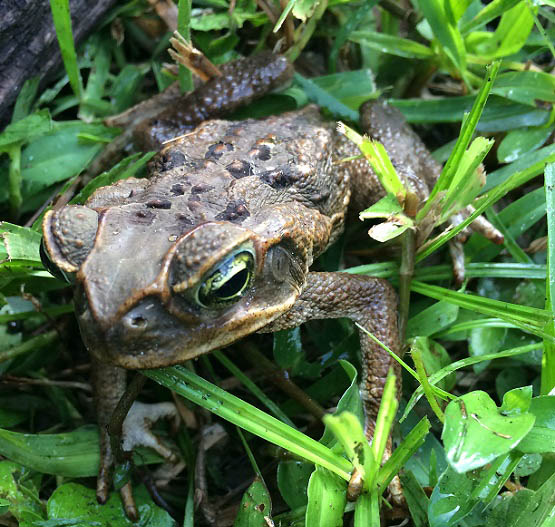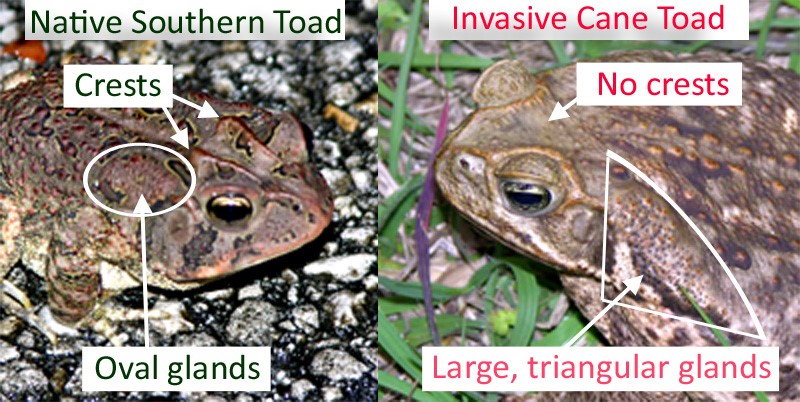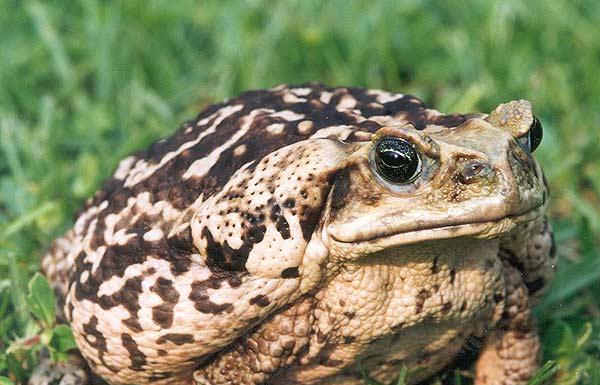‘Monster’ Cane Toads That Kill Dogs With Toxic Glands Surface in Florida

The cane toad (also known as the bufo, giant or marine toad) is a large, nonnative amphibian that has been introduced into Florida. Cane toads are considered an invasive species and are poisonous to most animals that try to bite or consume them.
The skin-gland secretions of cane toads (called bufotoxin) are highly toxic and can sicken or even kill animals that bite or feed on them, including native animals and domestic pets. The skin secretions may irritate the skin or burn the eyes of people who handle them. Cane toad eggs also contain bufotoxin and can harm or kill native animals that consume them. Cane toads also potentially compete with native frogs and toads for food and breeding areas.
Cane toads were first introduced into Florida to control agricultural pests in sugar cane in the 1930s and 40s. It is believed that current populations are the result of pet trade escapes and releases in the 1950s and 60s. Cane toads are currently found in central and south Florida, generally south of the I-4 corridor.
Visit IveGot1.org for a map of credible cane toad sightings. (And other cool sightings – Ignore the sign up page by clicking on one of the tabs above.)
The 2019 mild winter and 2020 wet spring in Palm Beach, Florida have allowed thousands of juvenile toads to hatch from water sources such as ditches, canals, ponds and rivers to the extent that residents are afraid to go into their yards and swimming pools, especially if they have pets.
Cane toads are omnivores and eat a variety of vegetation, insects, small birds, other toads or frogs, lizards, small mammals, and snakes. If available, cane toads may be attracted to and eat human table scraps and pet food. Never leave pet food outside to avoid attracting cane toads and other animals.

Cane toads are reddish-brown to grayish-brown with a light-yellow or beige belly and can be uniform in color or have darker markings around the body. They have enlarged glands behind the eyes, which angle downward onto the shoulders. The glands secrete a potent milky-white toxin (bufotoxin) as defense against predators including domestic pets.
Cane toads generally range in size from 6 to 9 inches in length. They can be confused with the native southern toad, however, adult cane toads are much larger than adult southern toads which only grow to a maximum of approximately 3 to 4 inches.
Cane toads do not have ridges across the head, as seen in the southern toad.
In Florida, cane toads are found in urban, suburban and agricultural areas. Cane toads are commonly found in yards, around buildings or near canals and ponds. Cane toads breed year-round in standing water, streams, canals and ditches.

